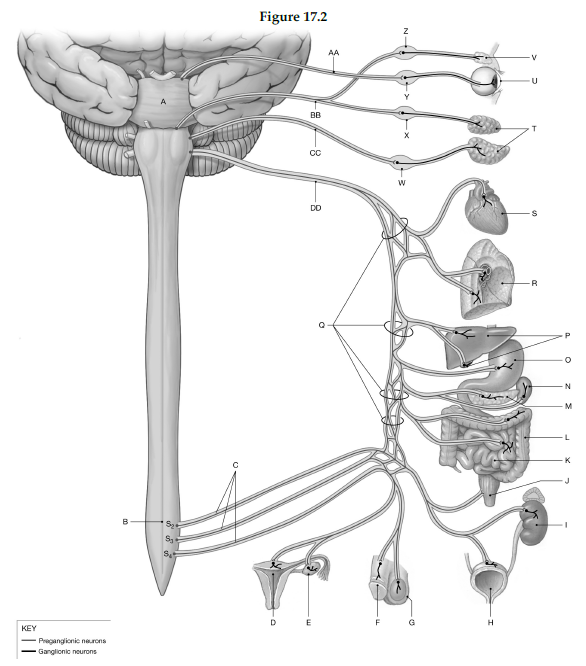Using the figure below, identify the labeled part.

1) Label A: ______________________________
2) Label B: ______________________________
3) Label C: ______________________________
4) Label D: ______________________________
5) Label E: ______________________________
6) Label F: ______________________________
7) Label G: ______________________________
8) Label H: ______________________________
9) Label I: ______________________________
10) Label J: ______________________________
11) Label K: ______________________________
12) Label L: ______________________________
13) Label M: ______________________________
14) Label N: ______________________________
15) Label O: ______________________________
16) Label P: ______________________________
17) Label Q: ______________________________
18) Label R: ______________________________
19) Label S: ______________________________
20) Label T: ______________________________
21) Label U: ______________________________
22) Label V: ______________________________
23) Label W: ______________________________
24) Label X: ______________________________
25) Label Y: ______________________________
26) Label Z: ______________________________
27) Label AA: ______________________________
28) Label BB: ______________________________
29) Label CC: ______________________________
30) Label DD: ______________________________
1) Pons
2) Spinal cord
3) Pelvic nerves
4) Uterus
5) Ovary
6) Penis
7) Scrotum
8) Urinary bladder
9) Kidney
10) Rectum
11) Small intestine
12) Large intestine
13) Pancreas
14) Spleen
15) Stomach
16) Liver and gallbladder
17) Autonomic plexuses
18) Lungs
19) Heart
20) Salivary glands
21) Eye
22) Lacrimal gland
23) Otic ganglion
24) Submandibular ganglion
25) Ciliary ganglion
26) Pterygopalatine ganglion
27) N III
28) N VII
29) N IX
30) Vagus (N X)
You might also like to view...
A primary function of the liver is to ____________________.
Fill in the blank(s) with the appropriate word(s).
Define calorie
What will be an ideal response?
____________ syndrome, also called cervical vertebral malformation, is seen more often in Doberman pinschers than other breeds of dog
Fill in the blank(s) with correct word
Bursae are structures associated with fibrous, cartilaginous, and synovial joints
Indicate whether the statement is true or false